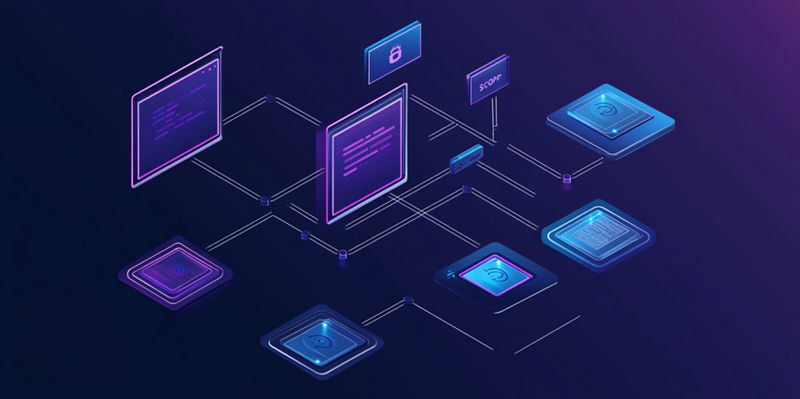In a significant shift poised to revolutionize how cybersecurity teams operate, artificial intelligence is on the verge of embedding itself deeply into the DevSecOps landscape. This development is expected to bring about a seamless integration of security measures directly within the software development lifecycle (SDLC), effectively addressing vulnerabilities before they can evolve into more significant problems. Rob Aragao, chief security strategist for OpenText, elaborates that AI will soon embed governance mechanisms directly within developers’ integrated development environments (IDEs). By doing so, potential security issues can be intercepted in real-time, thus simplifying guidance without disrupting developers’ workflow. This proactive approach is anticipated to significantly reduce the bottleneck that cybersecurity measures typically create in the SDLC.
AI will not merely serve as an auxiliary tool but will become an integral part of the DevSecOps pipeline itself. AI agents will monitor code development continuously, offering real-time resolutions to security issues and ensuring compliance with established mandates. This capability is expected to elevate the overall quality of the code substantially, especially when these AI models are trained to recognize and use secure, vetted code. However, Aragao also raises a critical issue: the dual-edged nature of AI in its current form. General-purpose large language models (LLMs), commonly used by developers, still present a risk as they can inadvertently introduce vulnerabilities into the code due to variable quality standards of data sourced from the internet.
Real-Time Security and Compliance
The incorporation of AI in DevSecOps goes beyond mere monitoring; it strives to embed governance within the development framework, thus fostering a more robust and secure coding environment. AI-driven governance will ensure that security protocols and compliance mandates are adhered to consistently throughout the development process. This creates a more streamlined workflow where developers can receive instant feedback on potential security issues without halting their progress. By integrating these controls into the IDEs, AI will make security considerations a natural part of the coding process, thus alleviating one of the major pain points in the current DevSecOps practice.
Another crucial aspect is training the AI models with secure, vetted code to enhance their efficacy. When AI understands what constitutes secure coding practices, it can proactively suggest and even implement these measures as developers write code. As Aragao notes, this has the potential to mitigate many of the risks associated with coding errors and vulnerabilities, raising the quality of the final product. However, caution must be exercised to avoid the pitfalls associated with using general-purpose AI models. These models, while powerful, may not always align with stringent security standards due to inconsistent data quality from online sources. As a result, the emphasis should be placed on quality training data to realize AI’s full potential in DevSecOps.
Balancing Governance and Development Speed
Creating a balanced governance framework that seamlessly integrates with the development process is pivotal to the successful adoption of AI in DevSecOps. Cybersecurity teams must be vigilant to ensure that their frameworks are effective yet non-intrusive. Overly restrictive measures can lead to unintended consequences, such as developers bypassing official channels to set up shadow IT environments. These unsanctioned setups could introduce additional vulnerabilities and further complicate the security landscape. Thus, a balanced approach that promotes security without hindering development speed is essential for the harmonious functioning of AI within DevSecOps.
The overarching trend towards integrating AI into DevSecOps underscores the profound changes AI is bringing to the field. Organizations increasingly recognize the need to prepare their governance protocols for the capabilities AI will bring in the near future. By anticipating these changes, companies can remain ahead of the curve, ensuring that their applications are secure from the outset. Ultimately, this proactive approach promises to transform application security, making it an inherent part of the development process rather than a post-deployment afterthought. Preparing for this future requires a thoughtful and judicious crafting of governance frameworks that support rapid, secure software creation.
Future of Application Security in DevSecOps
Artificial intelligence (AI) is set to transform cybersecurity within the DevSecOps framework, promising a seamless integration of security protocols directly into the software development lifecycle (SDLC). This advancement aims to address vulnerabilities before they escalate into significant issues. Rob Aragao, chief security strategist for OpenText, explains that AI will integrate governance mechanisms into developers’ integrated development environments (IDEs). This setup will allow for the immediate interception of potential security threats, offering real-time guidance without disrupting the developer’s workflow. Such a proactive stance is expected to eliminate the usual delays cybersecurity measures introduce in the SDLC.
AI won’t just be an auxiliary tool but will become essential within the DevSecOps pipeline. AI agents will continuously monitor code development, resolving security issues in real-time and ensuring adherence to compliance mandates. This will significantly improve code quality, particularly when AI models are trained to identify and use secure, validated code. However, Aragao also highlights a critical concern: the double-edged nature of AI today. General-purpose large language models (LLMs) still pose risks, as they can inadvertently introduce vulnerabilities into code due to inconsistent data quality from online sources.

